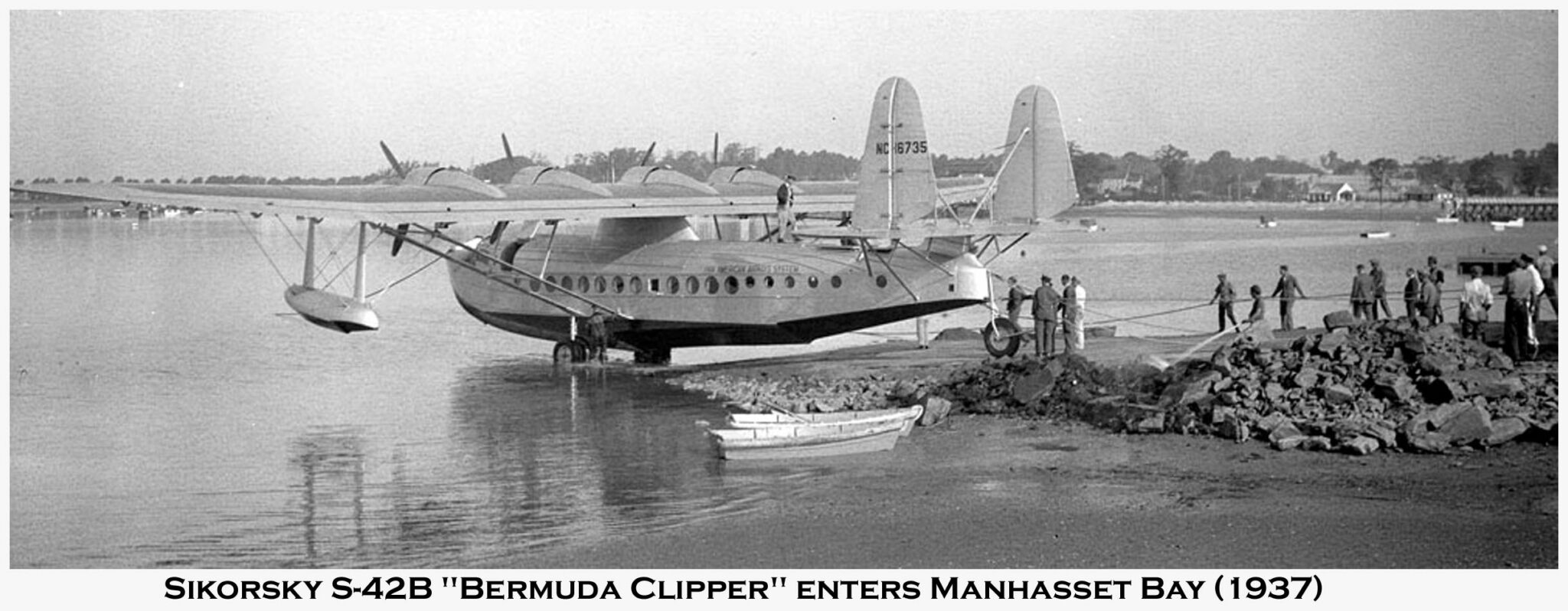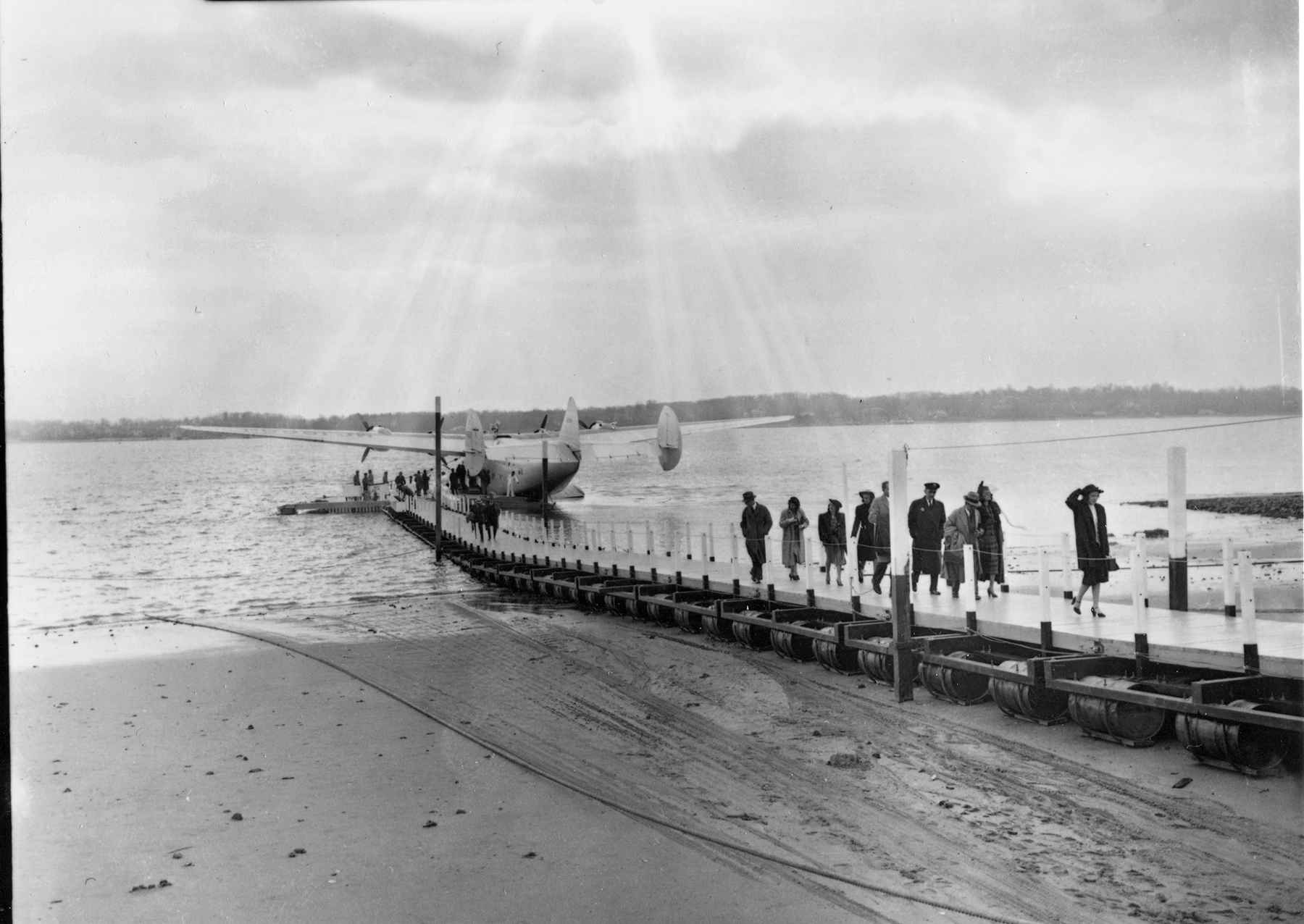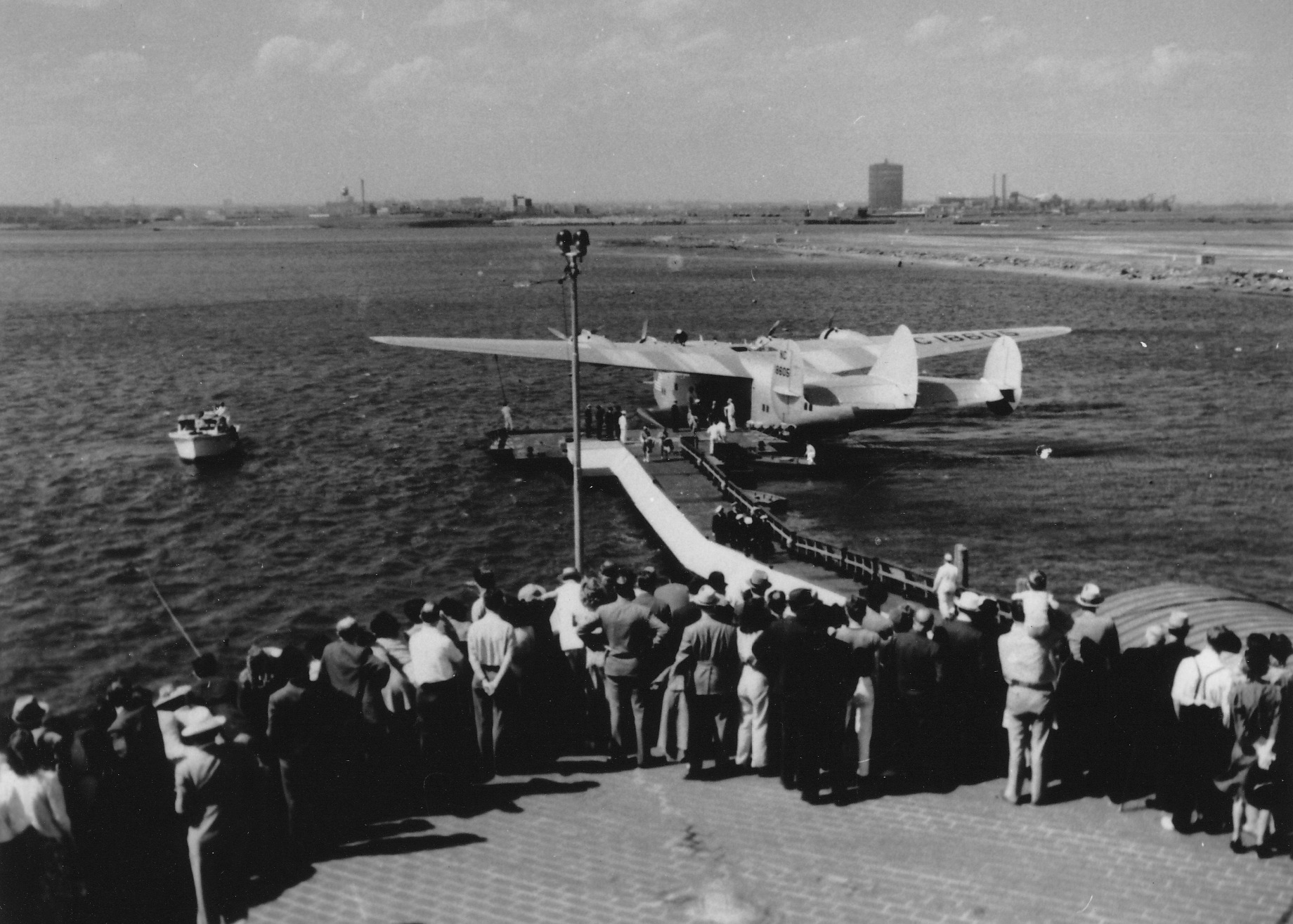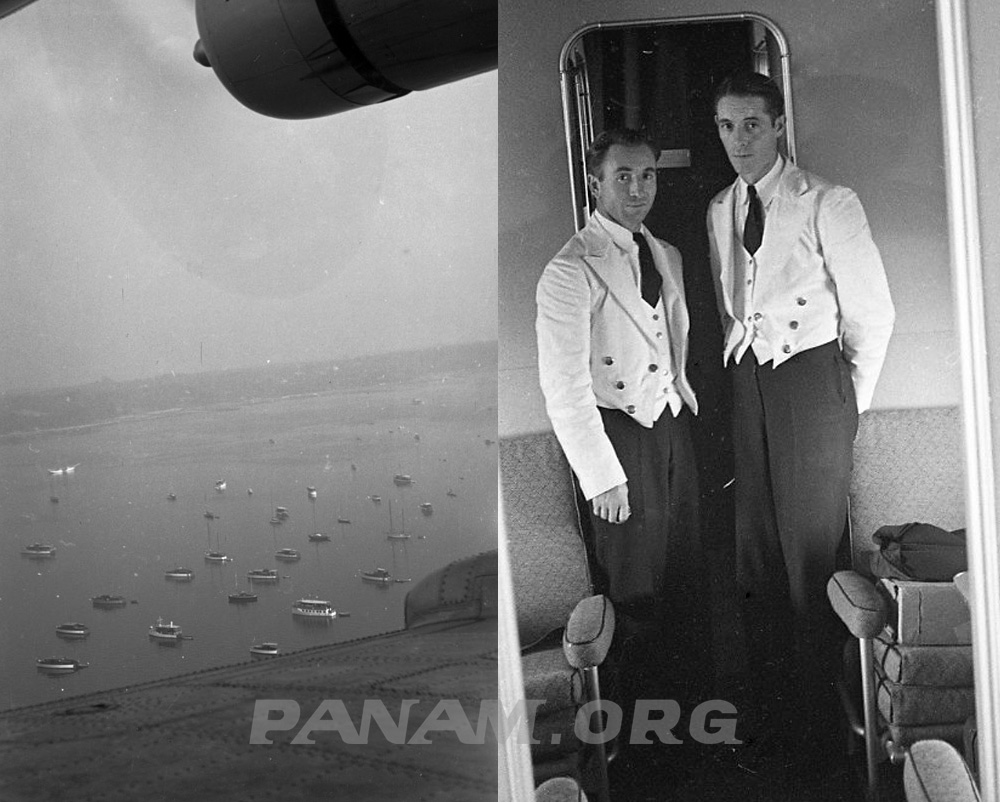The historic Pan Am property at Tom’s Point on Sagamore Hill Drive in Port Washington is a testament to the golden era of aviation. Constructed in the 1920s, it served as the operations center for Pan American World Airways (Pan Am), an iconic airline that pioneered transatlantic and transpacific flights. The Pan Am building played a crucial role during World War II, functioning as a training facility for military pilots.

Pan Am was a historic and pioneering airline that operated from 1927 to 1991. Renowned for its role in advancing international air travel, Pan Am was the first to offer transatlantic and transpacific flights. Its iconic blue globe logo symbolized a bygone era of luxury air travel and global connectivity.
Many people, even longtime Port residents, have no idea of the bayside community’s fascinating history related to air (and sea) transportation. I had a chance to speak with John Luetich, the curator and historian at Long Island’s own Pan Am Museum, and also a longtime Pan Am employee. He worked for the company for 15 years in reservations, as a phone agent and then as a computer programmer and analyst. His mother had also worked for the company for nearly 40 years.

CH: Tell me about Pan Am in Port Washington.
JL: Pan Am started service with flying boats from New York, Port Washington to Bermuda in 1937. They had gotten permission from the British government to do that, a shared agreement with what is now British Airways. Pan Am was founded in 1927. For the first 10 years, Pan Am just flew out of Florida and Texas. Its headquarters were always in New York City, initially in the Chrysler Building and then to the Pan Am Building (now the MetLife Building) in 1963.

CH: Why Port Washington?
JL: Pan Am used “flying boats” and it needed hangar space. They bought the big plot on Tom’s Point in Port Washington. The facility does not exist anymore; it was taken over by a steel company and then subsequently had been closed off because of soil toxicity. The ramp into the water, parts of it, may still be there, but the hangar is gone.
CH: What were operations like back then?
JL: It was primarily used for a frequent flight from Port Washington to Bermuda. In those years, everything was first-class. In order to even go to Bermuda, you needed money. Passengers to Bermuda flew on the Sikorsky S-42, a flying boat. In 1939, Pan Am began Atlantic flights to Ireland and England. The transatlantic flights were made by the famous Boeing 314, the most famous flying boat of all. Pan Am eventually moved operations to the Marine Air Terminal at LaGuardia in 1940.

The Sikorsky S-42 or the “Flying Clipper” was a commercial flying boat designed and built by Sikorsky Aircraft to meet requirements for a long-range flying boat laid out by Pan Am in 1931. The innovative design included wing flaps, variable-pitch propellers, and a tail-carrying full-length hull. The prototype first flew in 1934, and, in the period of development and test flying that followed, quickly established 10 world records for payload-to-height.
CH: When do we see the decline in Pan Am operations?
JL: During World War II, airports were being built for land planes. Land planes were easier and cheaper to fly. The initial use of flying boats was simply because there weren’t that many airports at the time.

The Pan Am Museum Foundation is located on the third floor at the Cradle of Aviation on Charles Lindbergh Blvd. in Garden City. The museum is open Tuesday through Sunday from 10 a.m. to 5 p.m. Admission to the galleries is $16; a fee of $8 is optional to enjoy the museum’s planetarium. Visit www.thepanammuseum.org or call 888-826-5678 for more details.



















